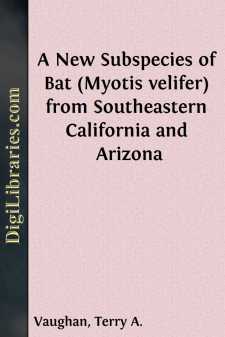Categories
- Antiques & Collectibles 13
- Architecture 36
- Art 48
- Bibles 22
- Biography & Autobiography 816
- Body, Mind & Spirit 145
- Business & Economics 28
- Children's Books 17
- Children's Fiction 14
- Computers 4
- Cooking 94
- Crafts & Hobbies 4
- Drama 346
- Education 58
- Family & Relationships 59
- Fiction 11834
- Foreign Language Study 3
- Games 19
- Gardening 17
- Health & Fitness 34
- History 1378
- House & Home 1
- Humor 147
- Juvenile Fiction 1873
- Juvenile Nonfiction 202
- Language Arts & Disciplines 89
- Law 16
- Literary Collections 686
- Literary Criticism 179
- Mathematics 13
- Medical 41
- Music 40
- Nature 179
- Non-Classifiable 1768
- Performing Arts 7
- Periodicals 1453
- Philosophy 66
- Photography 2
- Poetry 897
- Political Science 203
- Psychology 45
- Reference 154
- Religion 516
- Science 126
- Self-Help 85
- Social Science 82
- Sports & Recreation 34
- Study Aids 3
- Technology & Engineering 59
- Transportation 23
- Travel 463
- True Crime 29
Our website is made possible by displaying online advertisements to our visitors.
Please consider supporting us by disabling your ad blocker.
A New Subspecies of Bat (Myotis velifer) from Southeastern California and Arizona
by: Terry A. Vaughan
Description:
Excerpt
The first specimens of Myotis velifer from California were taken in 1909 by C. L. Camp at Needles, San Bernardino County (Grinnell, Univ. California Publ. Zool., 12:266, March 20, 1914), and subsequently this bat was recorded from farther south in the lower Colorado River Valley at the Riverside Mountains, Riverside County (Stager, Jour. Mamm., 20:226, May 14, 1939). West of the Rocky Mountains the species is known to occur also in at least the southern two-thirds of Arizona, southwestern New Mexico, and is recorded from Thistle Valley, Utah, on the basis of two young specimens in alcohol (Miller and Allen, Bull. U. S. Nat. Mus., 144:87, May 25, 1928). Through comparisons made possible by the acquisition, in the last few years, of mammals from many parts of Mexico by the Museum of Natural History of the University of Kansas, it became evident that Myotis velifer in California and Arizona was an heretofore unnamed subspecies. It may be known as
Myotis velifer brevis new subspecies
Myotis velifer, Grinnell, Univ. California Publ. Zool., 12:266, March 20, 1914; Grinnell, H. W., Univ. California Publ. Zool., 12:259, January 31, 1918.
Myotis velifer velifer, Miller and Allen, Bull. U. S. Nat. Mus., 144:87, May 25, 1928; Burt, Jour. Mamm., 14:115, May 15, 1933; Burt, Misc. Publ. Mus. Zool. Univ. Michigan, 39:22, February 14, 1938; Hatfield, Bull. Chicago Acad. Sci., 6:146, January 12, 1942.
Type.—Male, adult, No. 22631, Museum of Natural History, University of Kansas; Madera Canyon, 5,000 ft., Santa Rita Mountains, Pima County, Arizona; obtained on March 12, 1948, by J. R. Alcorn; original number 5571.
Range.—Lower Colorado River Valley in California and Arizona, through southern two-thirds of Arizona, southwestern New Mexico, and northern Sonora; southern limits of range unknown.
Diagnosis.—Size small (see measurements). Color pale, upper parts being near (16"j) Snuff Brown (capitalized color terms are of Ridgeway, Color Standards and Color Nomenclature, Washington, D. C, 1912); underparts dull Pinkish Buff to nearly white in some specimens; ears and flight membranes near (16"l) Olive Brown; skull small.
Comparisons.—From Myotis velifer incautus (J. A. Allen), Myotis velifer brevis differs in: Size smaller; color slightly darker; skull smaller. From Myotis velifer peninsularis Miller, M. v. brevis differs in: Size larger; color darker; skull larger. From Myotis velifer velifer (J. A. Allen), M. v. brevis differs in; Size smaller; pelage paler, with less extensive basal dark portion; skull smaller.
TABLE 1.—Measurements, in Millimeters, of Myotis velifer
SexNumberaveragedAverageRangeM. v. velifer, 4 km. E Las Vigas, 8,500 ft., Veracruz, Mexico.Total lengthââ¢â1597.192.0-101.0" "ââ¢â¬999.093.0-103.0Length of forearmââ¢â2744.142.1-46.0" " "ââ¢â¬1844.743.3-46.1Condylobasal lengthââ¢â1515.915.4-16.2" "ââ¢â¬916.015.7-16.4Interorbital breadthââ¢â154.23.9-4.2" "ââ¢â¬94.13.9-4.3Mastoid breadthââ¢â158.48.2-8.5" "ââ¢â¬98.48.2-8.6Zygomatic breadthââ¢â1510.710.4-10.9" "ââ¢â¬910.710.4-11.2M. v. incautus, 4 mi. E Sherman, Major Co., Oklahoma.Total lengthââ¢â11101.597.0-107.0Length of forearmââ¢â945.444.6-47.3Condylobasal lengthââ¢â1116.415.9-16.7Interorbital breadthââ¢â114.24.0-4.5Mastoid breadthââ¢â118.88.5-9.1Zygomatic breadthââ¢â1110.910.5-11.3M. v. brevis, Riverside Mtns., 35 mi. N Blythe, Riverside Co., California.Total lengthââ¢â896.691.5-99.0" "ââ¢â¬94.691.0-97.0Length of forearmââ¢â4541.840.4-44.5" " "ââ¢â¬642.140.7-43.4Condylobasal lengthââ¢â1615.515.1-15.8" "ââ¢â¬15.415.1-15.8Interorbital breadthââ¢â164.03.8-4.2" "ââ¢â¬3.93.9-4.0Mastoid breadthââ¢â168.27.8-8.6" "ââ¢â¬8.38.0-8.5Zygomatic breadthââ¢â1510.410.2-10.7" "ââ¢â¬10.410.1-10.6
Remarks.—Miller and Allen (op. cit. :90) considered specimens of Myotis velifer from Roosevelt, Arizona, to be intergrades between M....


